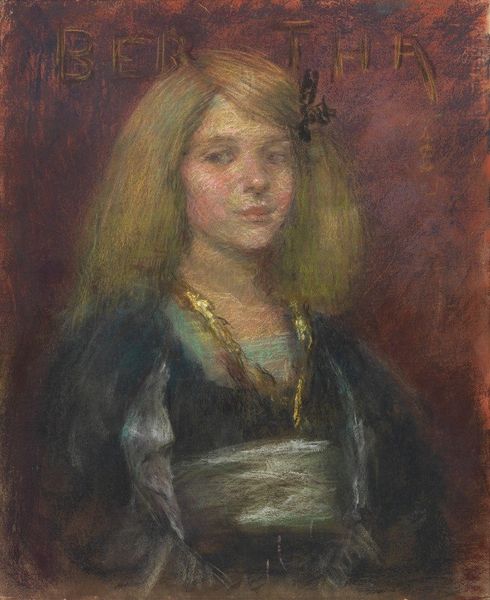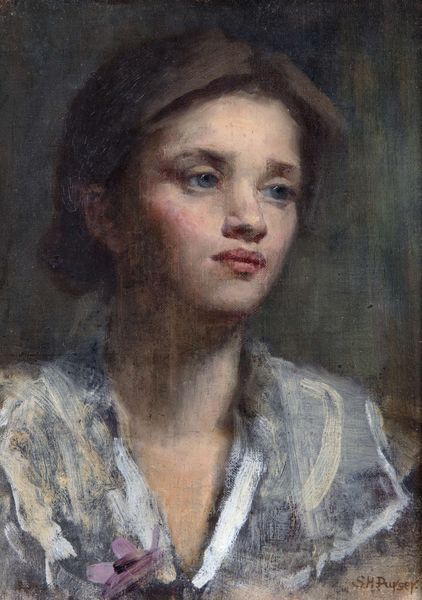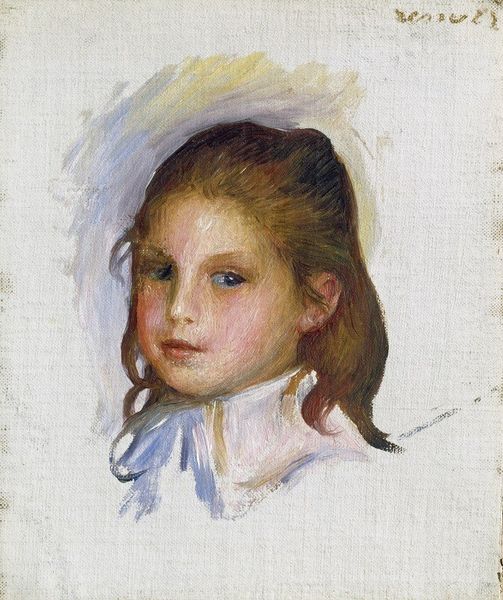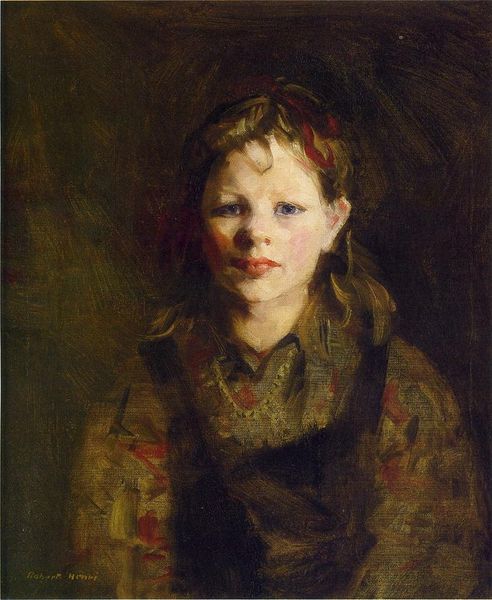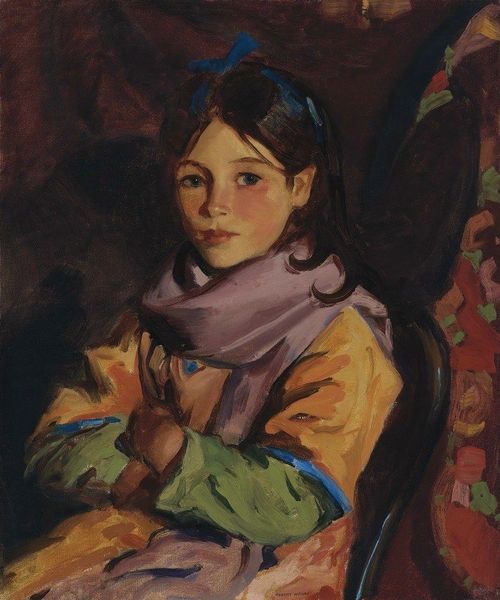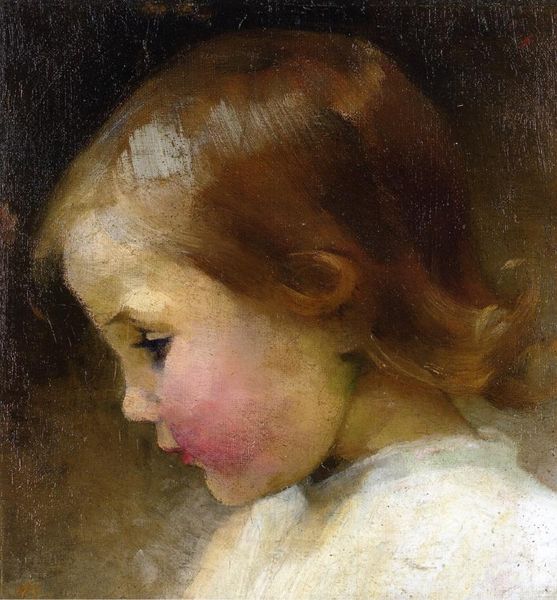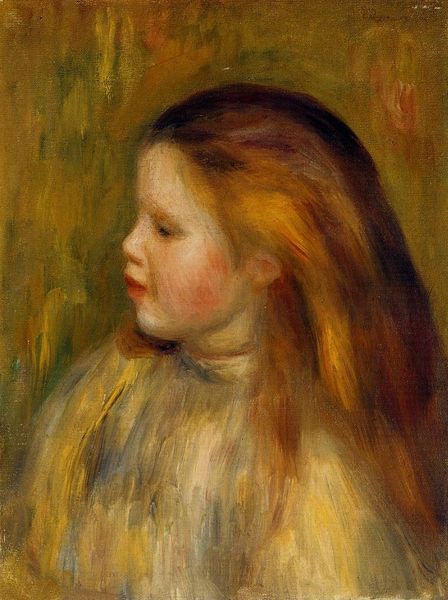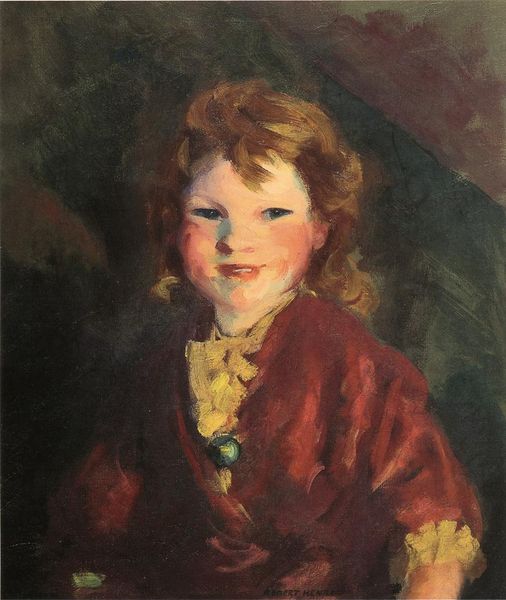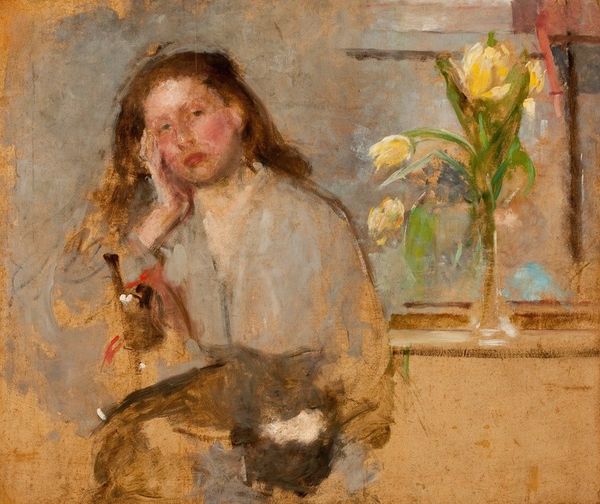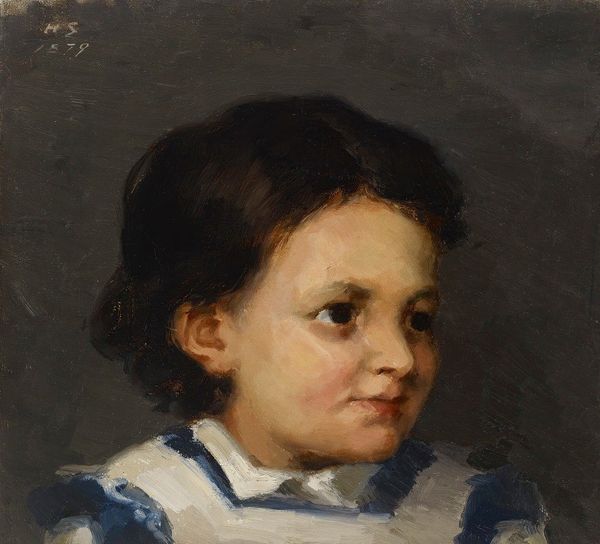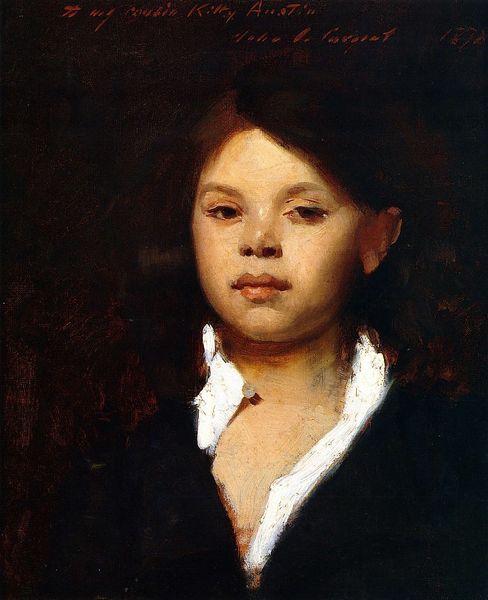
oil-paint
#
portrait
#
figurative
#
oil-paint
#
charcoal drawing
#
oil painting
#
romanticism
#
realism
Copyright: Public Domain: Artvee
Editor: We’re looking at Félix Ziem’s "Portrait de jeune fille," painted between 1845 and 1848, using oil. There’s something unfinished about it, but also incredibly intimate. What do you see in this piece in terms of its historical context? Curator: This work sits at a fascinating intersection. We see a burgeoning realism, particularly in the almost stark gaze of the young woman, combined with the lingering embrace of Romanticism in the loose brushstrokes and somewhat idealized portrayal. Considering the time, this wasn’t just a portrait, it was a statement about representation itself. The rise of the bourgeoisie fueled a demand for portraiture, but artists like Ziem were pushing the boundaries. Do you notice anything about her clothing? Editor: She is wearing what appears to be middle-class clothing. She is not wearing elaborate or eye-catching jewellery. What are the socio-political implications, considering the lack of emphasis on wealth and status? Curator: Precisely. The politics of imagery at the time favored grand displays of wealth and power, especially in portraiture. This rather understated portrayal, devoid of overt markers of status, signals a subtle shift. It hints at a move towards valuing individuality, an emerging democratic sensibility even, in the mid-19th century, don’t you think? Think about how museums at that time were carefully curating and presenting narratives. How might this work, displayed publicly, have shaped perceptions of class and beauty? Editor: That's interesting, because without context, it's just a portrait. But you are right. Displayed at that time, the meaning probably changed considerably depending on who was looking at it. It is a glimpse into how the rise of museums started influencing society! Curator: Absolutely. Art institutions play an active role in defining culture, and this portrait serves as a prime example. It's made me reconsider the quiet revolution that was occurring, brushstroke by brushstroke. Editor: I will definitely see portraiture differently now, appreciating how the seemingly subtle stylistic choices of an artist were quietly influencing cultural perceptions!
Comments
No comments
Be the first to comment and join the conversation on the ultimate creative platform.
